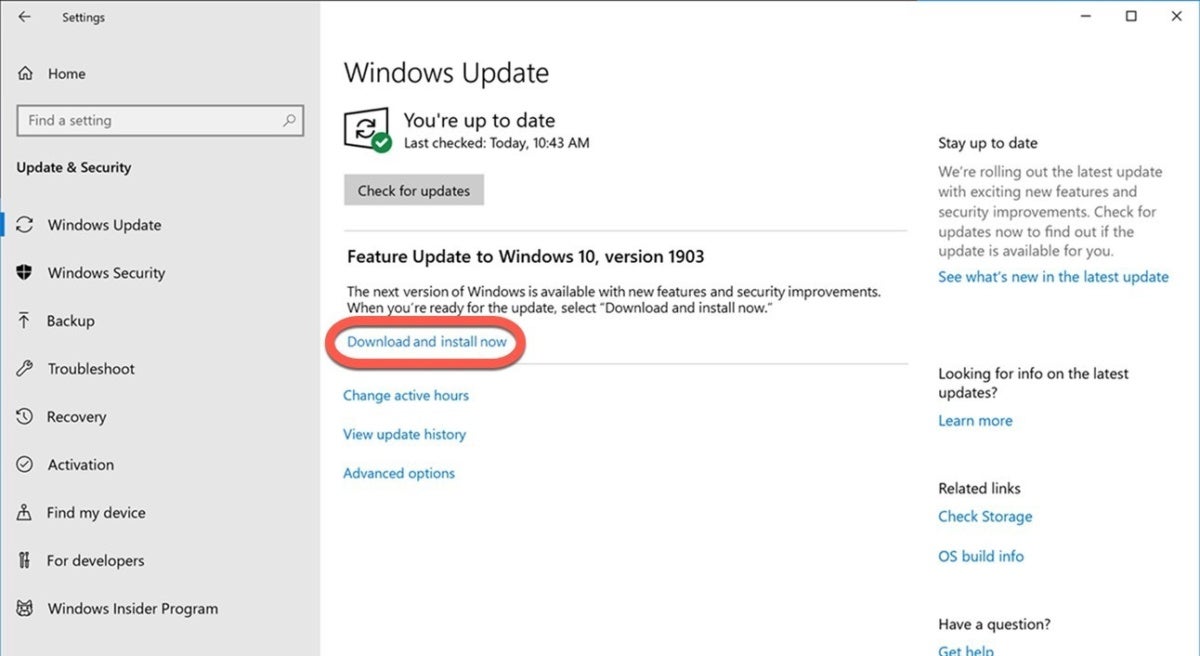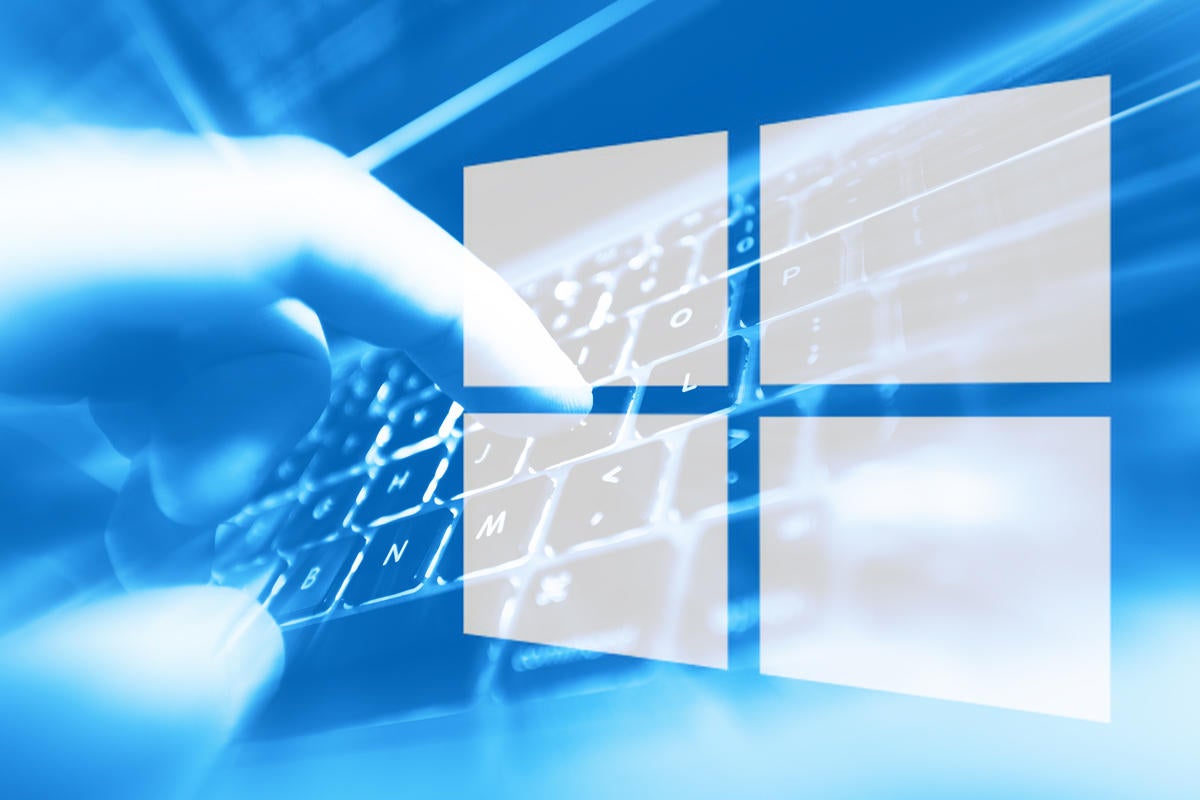Every few months, the Redmond, Wash. company switches up scheduling or support or something about Window 10, just to make sure everyone is paying attention.
Earlier this month, Microsoft again reshaped Windows 10's delivery. Or maybe the change wasn't about disbursing updates, but about not distributing them.
It all depends on your point-of-view.
Not surprisingly, there were questions. We have answers. (Maybe even the right ones.)
What did Microsoft do now? Did it change how long it supports Windows 10 again? No.
Instead, Microsoft futzed around with how updates are distributed to some Windows 10 PCs. Note the some. Specifically, Microsoft will soon add a new option - labeled "Download and install now" - to the "Windows Update" settings pane that will let users running Windows 10 Home and Windows 10 Pro manually trigger one of the twice-annual feature upgrades.
The "Download and install now" option will be included in Windows 10 1903, aka "Windows 10 May 2019 Update," now scheduled to begin release in late May. (Computerworld has predicted May 21 as the likeliest date.) Around the same time, Microsoft has promised, the option will also be added to the two previous upgrades, 1803 (April 2019 Update) and 1809 (October 2019 Update) so that current Windows 10 users won't have to upgrade to avoid an upgrade.
 Microsoft
Microsoft
The radical change to managing Windows 10's feature upgrade won't be expressed by a big button; Microsoft almost hides the impending option.
Why is this a big deal? Or isn't it? Oh, this is a big deal in Windows 10.
Before now, Microsoft has refused to cede control of installing feature upgrades on Windows 10 Home, whether that mean when one is installed or even if one is. Instead, Microsoft has forced Windows 10 Home to accept each feature upgrade, largely dictating when that happens through a system of automatically downloading and installing the code refreshes.
Users could initiate a feature upgrade installation - by selecting "Check for updates," for example - but that same action was painful to others who, only wanting to grab bug fixes, found their PC suddenly start downloading a much larger (and at times more problematic) upgrade. "Download and install now" is, in fact, Microsoft handing control over feature upgrades to users.
This line in the April 4 announcement put that plainly. "We will provide notification that an update is available ... but it will be largely up to the user to initiate when the update occurs ((emphasis added))," wrote Mike Fortin, the Microsoft executive who spelled out the "Download and install now" change in a post to a company blog.
How does that change things?
With "Download and install now," users can choose when to migrate from one version of Windows 10 Home to another.
It also allows users to decide whether to install a specific feature upgrade. If you do not apply the option by clicking on it in the Windows Update settings pane, says Microsoft, the current feature upgrade will not be downloaded and installed on the PC.
Really? I can stay on a version of Windows 10 as long as I'd like? Wait. That's not what Microsoft said.
"When Windows 10 devices are at, or will soon reach, end of service, Windows Update will continue to automatically initiate a feature update," Fortin said.
At some point, then, Microsoft will revert to its earlier behavior of automatically downloading and installing a feature upgrade.
I'm confused. How will this work? Like this, we think. (Microsoft has not shared details so far.)
It's May 29. Our user is running Windows 10 April 2018 Update, or 1803, which was recently updated to add the "Download and install now" option; he or she confirms that the option appears in Windows 10 Home's Windows Update settings pane.
A new feature upgrade - "Windows 10 May 2019" and numbered 1903 in Microsoft's yymm format - has just debuted.
Under the older scheme, Microsoft oversaw the upgrade. "In previous Windows 10 feature update rollouts, the update installation was automatically initiated on a device once our data gave us confidence that device would have a great update experience," summarized Fortin.
Now, users can start the upgrade by choosing "Download..." but they don't have too. This user decides to hold off and continues running Windows 10 1809.
Because Microsoft never got around to pushing Windows 10 1809 to this computer (see this analysis), and the user declined to actively seek it out using "Download..." that PC sticks with 1803.
So far, so good.
But Fortin's promise that Microsoft will intervene when the version nears its end-of-support date, will eventually come into play. At some point, then, before Nov. 13 - that's 1803's end of support - Microsoft will automatically download and install another feature upgrade to keep bug fixes coming to the PC.
What version of Windows 10 will Microsoft automatically download and install? The latest version.
If our sample user's system is still running Windows 10 1803 on, say, Aug. 7, and Microsoft's algorithms decide it's time for the machine to be force-fed another upgrade, it would download and install Windows 10 1903 (the "May 2019 Update," and yes, the dates don't match; don't ask) because that would be the latest version.
How long before the current version's expiration of support will Microsoft force a download and install? We don't know, because Microsoft's not said. (A company representative ignored that question when Computerworld asked.)
Fortin's phrasing - "When Windows 10 devices are at, or will soon reach, end of service..." - leaves a lot of wriggle room. One possible clue to the timing, however, was also present in his blog post.
"We will also begin the phased rollout using our ML ((machine learning)) model to intelligently target those devices running Windows 10, version 1803 or prior versions that our data and feedback predict will have the best update experience," Fortin wrote ((emphasis added)).
Because the paragraph including that sentence started with "In late May..." the implication is that Microsoft will start its "phased rollout" - that's code for the old way of upgrading unmanaged machines using forced downloads and installs - of Windows 10 1803 and earlier at the same time. Late next month.
If so, that's a very broad interpretation of "will soon reach end of service," for it would result in some PCs running 1803 being upgraded to 1903 five and a half months before the former's support retirement.
Will Microsoft nag users to upgrade or just jam the latest version down the pipe? Nag.
"We may notify you when a feature update is available and ready for your machine," said Fortin. Consider his "may" a synonym for "will." Wait, actually he did say "will" elsewhere in that same post: "We will provide notification that an update is available and recommended based on our data..."
It's unknown when or how Microsoft will present the notifications, or whether once on the screen they can be told not to reappear. If we had to bet, we'd wager they'd start not long after the launch and availability of version "n+2," where "n" is the feature upgrade currently powering the PC.
(It would seem in violation of the spirit of "Download and install now" to nag about installing "n+1" - not that Microsoft hasn't done similar things in the past - because, well, why bother offering the option to skip an upgrade but then nag users to not do so?)
Skip? What do you mean, skip? As in skipping a feature upgrade.
One of the constant complaints about Windows 10 from all directions has been about its release cadence, specifically that it's too fast. Although Microsoft addressed that early by reducing a planned three-times-a-year tempo to twice-annual, the company has also made other concessions, notably to its most important clients - enterprises - by extending the support lifecycle far enough to make it feasible to skip one or more feature upgrades, slowing down the pace to annual at the minimum.
Users with new-found control - Windows 10 Home users mainly - may come to love "Download and install now" because it lets them adopt an upgrade only when it's been thoroughly tested by millions of others. But our hunch is that more will use the option to skip every other feature update, cutting the upgrade velocity in half.
Users will be able to skip an upgrade either by calling on "Download and install now" after the launch of version "n+2" - by all rights there should be a six-month overlap between "n" and "n+2," although delays may shorten that - or by doing nothing, thus waiting for Microsoft to automatically deploy "n+2" as "n" nears support retirement.
 IDG/Gregg Keizer
IDG/Gregg Keizer
Using 'Download and install now," Windows 10 Home owners should be able to skip every other feature upgrade, thus facing just one upgrade annually.
What about business users? What do they get? Nothing. But then, they already have considerable control over feature upgrade deployment.
The "Download and install now" option is aimed right at Windows 10 Home users, who have had to accept, unwillingly in many cases, every feature upgrade Microsoft offered. Those running Windows 10 Pro and Windows 10 Enterprise have always had more flexibility in what they put on their PCs and when.
Windows 10 Pro, for example, has always had a deferral feature that individual users could spin up to keep a feature upgrade at bay. Windows 10 Enterprise, on the other hand, provides for a static build - Long-term Servicing Channel, or LTSC - and with the September 2018 extension of support to 30 months (for the xx09 upgrades only), companies can easily ease the release pace to yearly and with much effort, even once every two years.
Fortin did not say whether "Download and install now" would be limited to Windows 10 Home. It may be. If it's not, it will almost certainly be omitted from Windows 10 Enterprise, as IT administrators will not want workers triggering upgrades.
However, Windows 10 Pro is often used by businesses, including very small businesses that rely on the consumer-grade Windows Update service instead of its offshoot, Windows Update for Business, that is called upon when deferrals are set in "Advanced options". In those small business scenarios, where no one is using group policies or even tightly managing PCs, the "Download and install now" might be very welcome.






